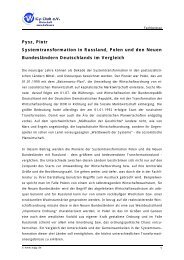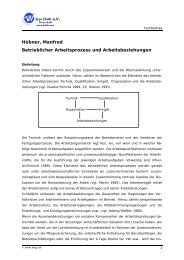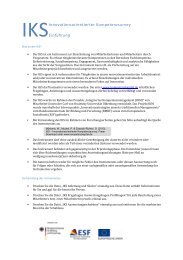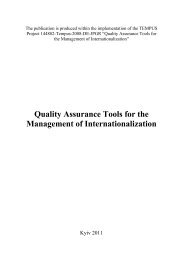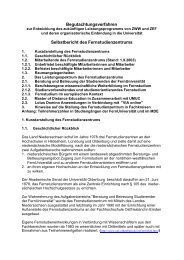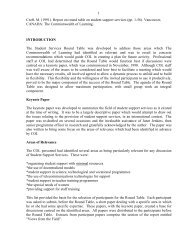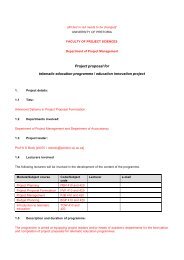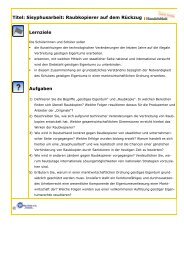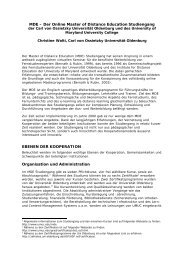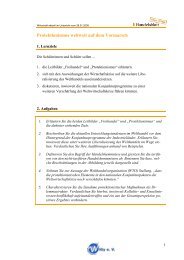Assessing the Costs and Benefits of Telelearning: A Case Study ...
Assessing the Costs and Benefits of Telelearning: A Case Study ...
Assessing the Costs and Benefits of Telelearning: A Case Study ...
You also want an ePaper? Increase the reach of your titles
YUMPU automatically turns print PDFs into web optimized ePapers that Google loves.
Table 17<br />
<strong>Benefits</strong> <strong>and</strong> Limitations <strong>of</strong> Access <strong>and</strong> Flexibility<br />
<strong>Benefits</strong> Limitations<br />
• There was increased access to an<br />
OISE/UT degree.<br />
• There was access to diverse students.<br />
• The online format fits a flexible work<br />
schedule in terms <strong>of</strong> time <strong>and</strong> place.<br />
Teaching <strong>and</strong> Learning Functions<br />
• Technological problems can interrupt<br />
<strong>the</strong> learning process.<br />
This section will cover <strong>the</strong> following topics related to teaching <strong>and</strong> learning<br />
functions: course design <strong>and</strong> content, course objectives, course materials, time dem<strong>and</strong>s,<br />
<strong>and</strong> delivery method.<br />
Course Design <strong>and</strong> Content. Although this course had already run twice in <strong>the</strong><br />
online format using Parti s<strong>of</strong>tware, with <strong>the</strong> introduction <strong>of</strong> WebCSILE as <strong>the</strong> new course<br />
s<strong>of</strong>tware, <strong>the</strong>re were still a few issues that arose in terms <strong>of</strong> course design <strong>and</strong> content:<br />
We did [this course] twice on Parti <strong>and</strong> this was <strong>the</strong> first time we had done<br />
it on WebCSILE. So having done it twice before, we had a sense <strong>of</strong> what<br />
did <strong>and</strong> didn't work. We did different things each time to try <strong>and</strong> engage<br />
<strong>the</strong> students in interaction. (instructor 2)<br />
One <strong>of</strong> <strong>the</strong> design issues that a few students had difficulty with was having all <strong>of</strong><br />
<strong>the</strong> students documents posted online as part <strong>of</strong> <strong>the</strong> course content. Although it was<br />
intended to be a means <strong>of</strong> learning from each o<strong>the</strong>rs work, not all <strong>of</strong> <strong>the</strong> documents were<br />
relevant to all students:<br />
[I was] unable to be spontaneous as I plowed though <strong>the</strong> pages <strong>of</strong> written<br />
material. Having all <strong>of</strong> everyone's documents was not helpful. (student 8)<br />
One <strong>of</strong> <strong>the</strong> students felt it would be more helpful to post only parts <strong>of</strong> each students'<br />
work. Particularly parts <strong>of</strong> <strong>the</strong>ir work that would generate useful discussion for <strong>the</strong> entire<br />
class:<br />
Discussions have to be more clearly directed. Information that is posted<br />
should not just be a total document, perhaps, just relevant parts to discuss.<br />
(student 8)<br />
Ano<strong>the</strong>r issue <strong>of</strong> concern was <strong>the</strong> level <strong>of</strong> structure provided in <strong>the</strong> course. There<br />
appeared to be adequate structure in terms <strong>of</strong> deadlines for work to be completed:<br />
28



